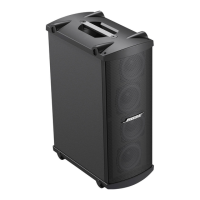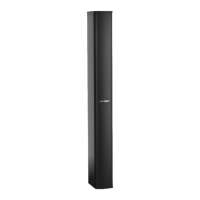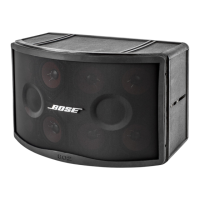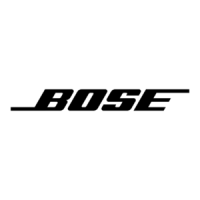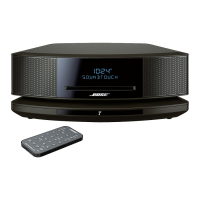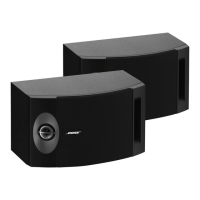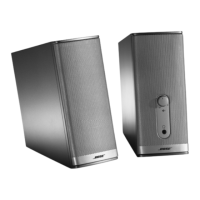Bose
®
MA12™ Modular Array: Technical Foundation & Discussion
April 2002, © Bose Corporation, All Rights Reserved
Page 4 of 36
INTRODUCTION
CUSTOMER requirements for a sound system are diverse and cover the areas of acoustics,
architecture, operation and service. Some of the most important requirements include the
following:
- Customers value a system that has the right balance of low, mid and high frequencies –
what is called ‘tonal balance’. Customers hear and complain about sound that is too
‘boomy’ or ‘shrill’ or ‘sibilant’, all examples of tonal balance problems.
-A system that plays at the right level is better than one that is too soft or too loud.
Customers routinely complain about both excessive sound levels or when the desired
impact can not be achieved because the system is unable to play loud enough.
-A system where the sound is perceived to come from the same direction as the action to
which it corresponds is better in many applications. When, for example, a talker is on
stage, a system whose sound is perceived to come from the stage is better than one
where the sound comes from above. Lack of eye-ear correspondence is disconcerting
and distracting.
-A system that delivers music with clarity, and speech with intelligibility, is better than
one where instruments are garbled and speech is hard to understand. No other single
customer requirement generates as many complaints as poor speech intelligibility. It
often impacts the fundamental purpose of a venue – the sermon or lecture at a house of
worship, or the announcement at the airport, for example.
- Customers are understandably concerned about the appearance of a sound system. They
usually value a system that blends into its environment, and is out of the way. And
when the system is visible, customers want it to be elegant yet unobtrusive.
- Finally, customers value a system that works reliably for long periods of time without
degradation or the need for service. But should a problem occur, they want prompt,
cost-effective service. No customer wants to shut down a facility in order to undertake
repairs.
These customer requirements exist on any given project to one degree or another. For
example, in a place of worship a customer might seek nearly ideal speech intelligibility. But
in another situation, the required speech intelligibility might be set lower – to meet a
government standard for an emergency announcement in a shopping mall, for example.
Therefore, the intensity of need in each dimension on a specific project must be determined
for each project.
Customer satisfaction occurs to the degree that the performance levels in these key areas of
customer requirements are met at a competitive cost. The better system is always the one that
meets customer requirements for the least cost.
The standard design approach for meeting these requirements is unofficially called the
‘hang-and-tilt’ approach. In this approach, speakers with controlled radiation patterns are
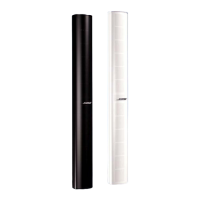
